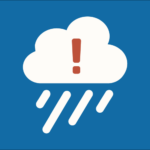Ice and Snow
Seattle Schools Transportation Adverse Weather Plan
From time to time throughout the school year, weather may force a change in the district’s normal operating routines.
The safety of your children is our primary concern.
Snow and Ice Information
If snow and ice conditions impact school operations, a robocall and an email notification will be sent out in SchoolMessenger between 5-6 a.m. advising either:
- School will run a two-hour late start and transportation will operate using snow routes
- School buildings closed with students at home engaged in remote learning

Winter Weather: How to find out if your school will have schedule changes due to ice or snow.
Two-Hour Late Start
When a two-hour late start is called, school bus service will operate only for full-day, in-district general education, special education, preschool, and Head Start students. Please refer to Seattle Public Schools (SPS) for program-specific operating information.
There will be no out-of-district transportation for McKinney-Vento, Nonpublic Agencies (NPA), or Community Based Organizations (CBO). Field trips and sporting events are also canceled.
Seattle Skills Center morning sessions will be canceled. Afternoon sessions will be held, however, there will be no midday transportation to afternoon sessions for students who normally ride a yellow bus. There will be transportation at the end of the day.
Snow Routes
In December, families will be mailed your student’s snow route, bus stop location, and times. New for 2023: Families will be able to access yellow bus transportation snow routes in their parent or guardian Source account.
These mailers have been translated into Amharic, Simplified Chinese, Somali, Spanish, and Vietnamese languages. If you do not receive your snow route information in the mail in December, please reach out to Transportation using Let’s Talk.
What are Snow Routes?
In the event of a two-hour late start, the bus stop location and times listed in the mailer are where your student can catch their bus.
Snow routes differ from regular routes. They have been designed to make sure bus stops are on main roads that the Seattle Department of Transportation (SDOT) will prioritize to keep clear of snow and ice. The bus stop may be in a different location from your student’s regular bus stop. If your student receives curb-to-curb bus service, their bus stop may be relocated to a safer location as determined by the Transportation Department.
If your student uses an alternative service provider to get to school (EverDriven, HopSkipDrive, ZUM, etc.), and there is a two-hour late start, the service provider will attempt to pick up your student at their regular location. If the alternative service provider cannot safely reach your student’s pick-up location, you will be notified. Please use the alternative service provider’s app to keep track of your student’s ride.
King County Metro may also operate snow routes during a snow or ice event. Students that use King County Metro to get to school can view Metro’s snow route information.
Procedures for Snowfall During and Outside of School Hours
Options for Transportation Schedule Changes
Weather conditions may require the district to put buses on snow routes.
The district will make every effort to adhere to the established school calendar, bell schedules, and routes. However, there may be times when weather conditions make the usual roads unsafe or impassable.
As inclement weather and traffic will affect bus schedules and routes, we ask that families be patient and understanding. We will do everything in our control to provide accurate information regarding pick-up times for your students.
Communications Channels
If weather conditions make a schedule change necessary, the district will communicate the decision through the following methods and in this order:
- TV and Radio Stations: Checking the local television or radio stations is an effective and efficient way to find out if there is a schedule change.
- Local TV stations: KOMO 4, KING 5, KIRO 7, FOX 13
- Radio: KNWN AM 1000, KIRO 97.3 FM
- Social Media: District Facebook, Twitter, and Instagram accounts.
- District and School Websites: School schedule updates will be posted to the district and school websites.
- Phone calls, emails and text messages: Families will receive a phone call, email, and text message, however, other communication channels may be faster to check.
Family Preparation
It is highly recommended that every family have an emergency weather plan in place for timely activation. In the event school is delayed or canceled, please ensure your children have an alternate place to stay if you have commitments required outside the home.
Please ensure that a neighbor, family member, or center can care for or receive your students. Instruct your students to report directly home or to their established care center immediately on arrival in the evening.
Adverse Weather Transportation Plan Frequently Asked Questions
Note from the Seattle Department of Transportation (SDOT)
During a severe snowstorm, SDOT crews work 24 hours a day to clear crucial streets around the city for buses and emergency services. They can’t be everywhere at once, and it may take them up to 12 hours to clear all these streets after a break in the storm.
Please be a good neighbor and help keep Seattle moving this winter! Stock up on snow removal supplies and keep the sidewalk, curb ramps, and storm drains near your home, business, or job site free of leaves, snow, and ice.
Visit SDOT’s winter weather website for snow route maps and more tips on how to prepare.
